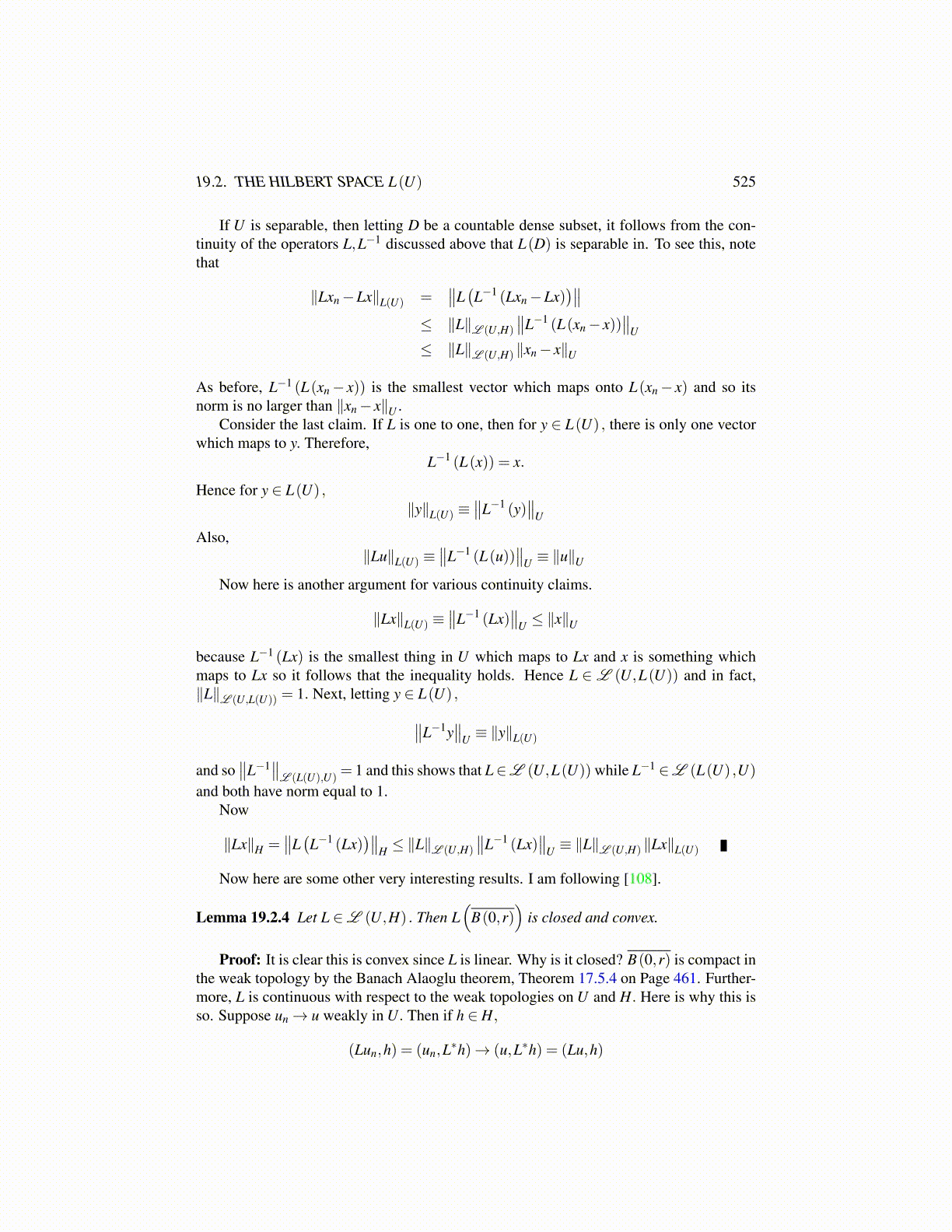
19.2. THE HILBERT SPACE L(U) 525
If U is separable, then letting D be a countable dense subset, it follows from the con-tinuity of the operators L,L−1 discussed above that L(D) is separable in. To see this, notethat
∥Lxn−Lx∥L(U) =∥∥L(L−1 (Lxn−Lx)
)∥∥≤ ∥L∥L (U,H)
∥∥L−1 (L(xn− x))∥∥
U
≤ ∥L∥L (U,H) ∥xn− x∥U
As before, L−1 (L(xn− x)) is the smallest vector which maps onto L(xn− x) and so itsnorm is no larger than ∥xn− x∥U .
Consider the last claim. If L is one to one, then for y ∈ L(U) , there is only one vectorwhich maps to y. Therefore,
L−1 (L(x)) = x.
Hence for y ∈ L(U) ,∥y∥L(U) ≡
∥∥L−1 (y)∥∥
U
Also,∥Lu∥L(U) ≡
∥∥L−1 (L(u))∥∥
U ≡ ∥u∥UNow here is another argument for various continuity claims.
∥Lx∥L(U) ≡∥∥L−1 (Lx)
∥∥U ≤ ∥x∥U
because L−1 (Lx) is the smallest thing in U which maps to Lx and x is something whichmaps to Lx so it follows that the inequality holds. Hence L ∈ L (U,L(U)) and in fact,∥L∥L (U,L(U)) = 1. Next, letting y ∈ L(U) ,∥∥L−1y
∥∥U ≡ ∥y∥L(U)
and so∥∥L−1
∥∥L (L(U),U)
= 1 and this shows that L∈L (U,L(U)) while L−1 ∈L (L(U) ,U)
and both have norm equal to 1.Now
∥Lx∥H =∥∥L(L−1 (Lx)
)∥∥H ≤ ∥L∥L (U,H)
∥∥L−1 (Lx)∥∥
U ≡ ∥L∥L (U,H) ∥Lx∥L(U)
Now here are some other very interesting results. I am following [108].
Lemma 19.2.4 Let L ∈L (U,H) . Then L(
B(0,r))
is closed and convex.
Proof: It is clear this is convex since L is linear. Why is it closed? B(0,r) is compact inthe weak topology by the Banach Alaoglu theorem, Theorem 17.5.4 on Page 461. Further-more, L is continuous with respect to the weak topologies on U and H. Here is why this isso. Suppose un→ u weakly in U. Then if h ∈ H,
(Lun,h) = (un,L∗h)→ (u,L∗h) = (Lu,h)